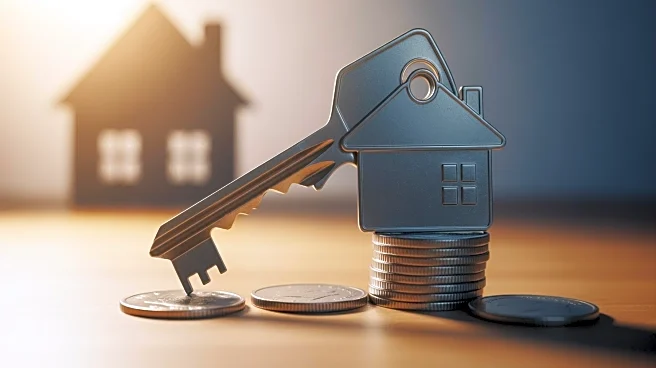What's Happening?
Austin, Texas, has emerged as the strongest buyer's market in the United States, according to a report by Redfin. The city has experienced a significant increase in housing inventory, with 130 percent
more sellers than buyers as of September. This marks a substantial rise from the previous year, where the gap was 81 percent. The surge in available homes is attributed to a construction boom that followed the pandemic-induced demand for housing. As a result, buyers now have the upper hand, negotiating prices and securing concessions. The median sale price of a home in Austin has dropped to $508,000, a 9.29 percent decrease from the previous year and significantly lower than the pandemic peak of $665,000 in May 2022.
Why It's Important?
The shift in Austin's real estate market highlights the broader impact of economic factors such as rising mortgage rates and increased construction. As buyers gain more negotiating power, affordability improves, potentially attracting more residents to the area. This trend could influence other markets across the U.S., especially those experiencing similar inventory increases. The situation in Austin serves as a case study for how cities can manage housing affordability by allowing new construction, preventing prices from becoming excessively high. Stakeholders in the real estate industry, including developers and policymakers, may look to Austin's example when addressing housing shortages and affordability issues in other regions.
What's Next?
While Austin currently favors buyers, the market dynamics could shift again. Redfin's chief economist, Daryl Fairweather, suggests that with new construction slowing, the balance of power might eventually return to sellers. This potential shift underscores the importance of monitoring construction trends and economic conditions that influence housing markets. Stakeholders, including real estate agents, developers, and potential homebuyers, will need to stay informed about these changes to make strategic decisions. Additionally, policymakers may consider implementing measures to sustain housing affordability and prevent future market imbalances.
Beyond the Headlines
Austin's real estate market transformation reflects broader economic and social trends, such as the rise of remote work and domestic migration to Southern cities. These factors have reshaped housing demand and supply dynamics, influencing urban development and planning. The city's experience underscores the importance of adaptive policies that accommodate growth while maintaining affordability. As other cities face similar challenges, Austin's approach to managing housing supply and demand could serve as a model for sustainable urban development.












